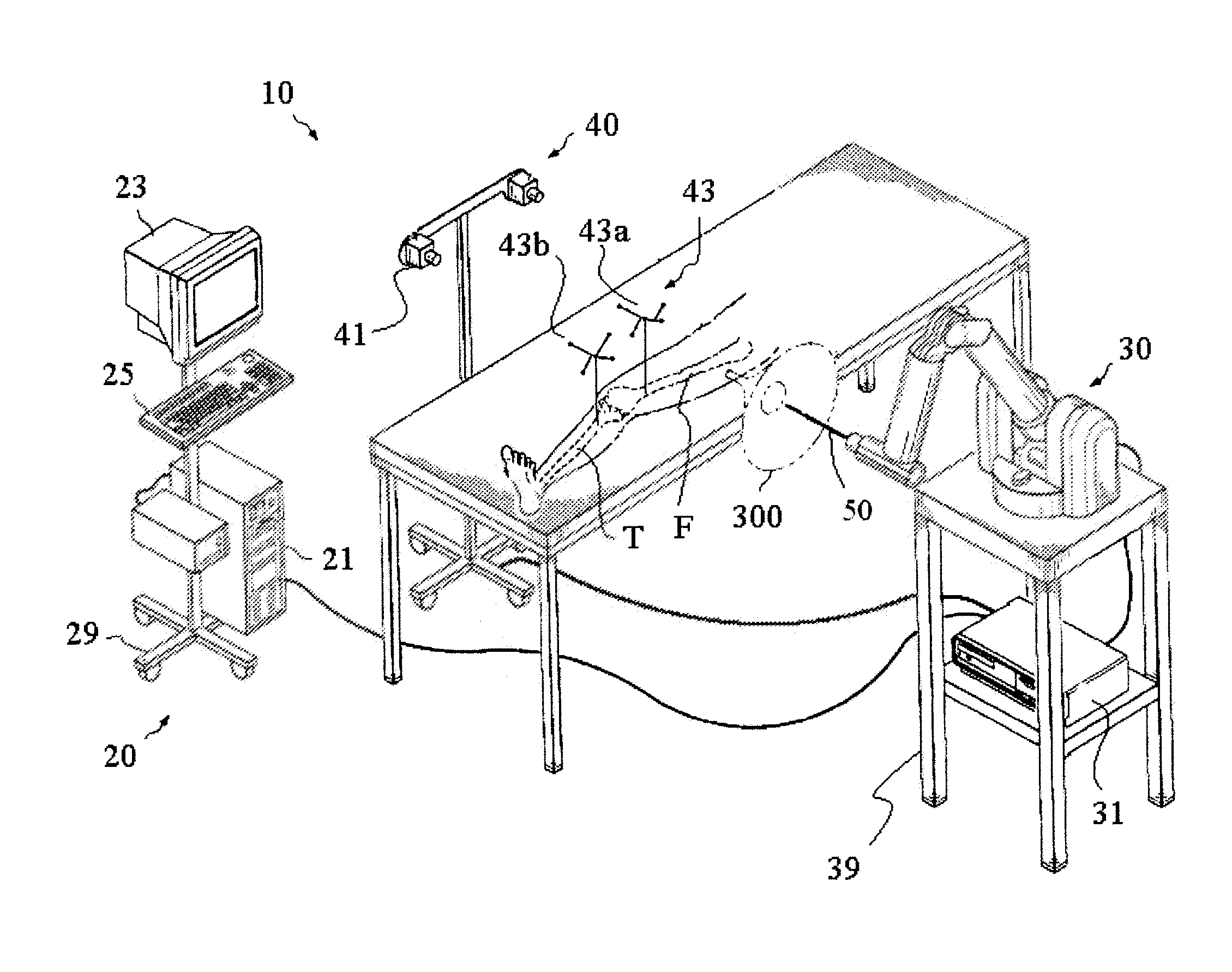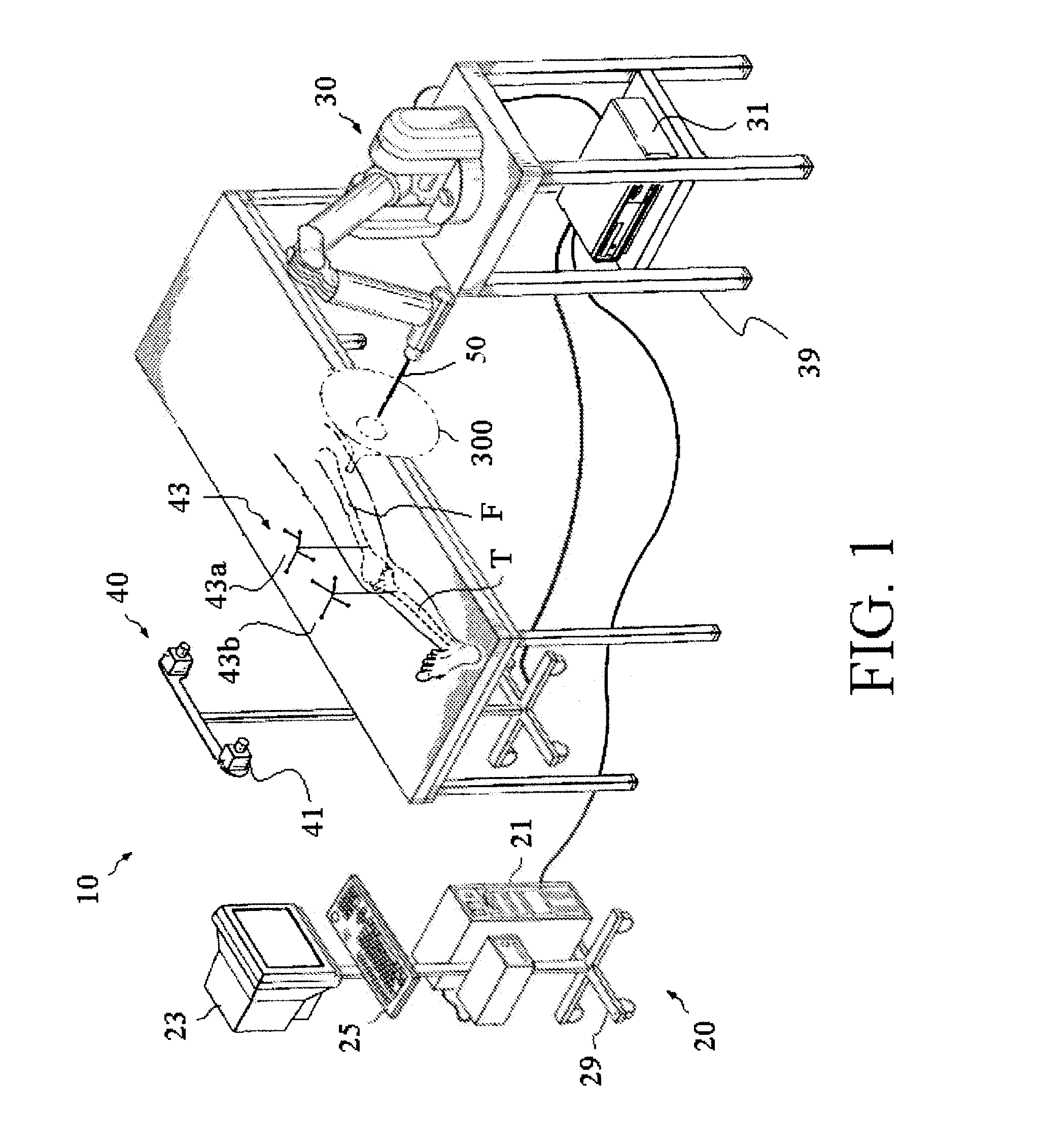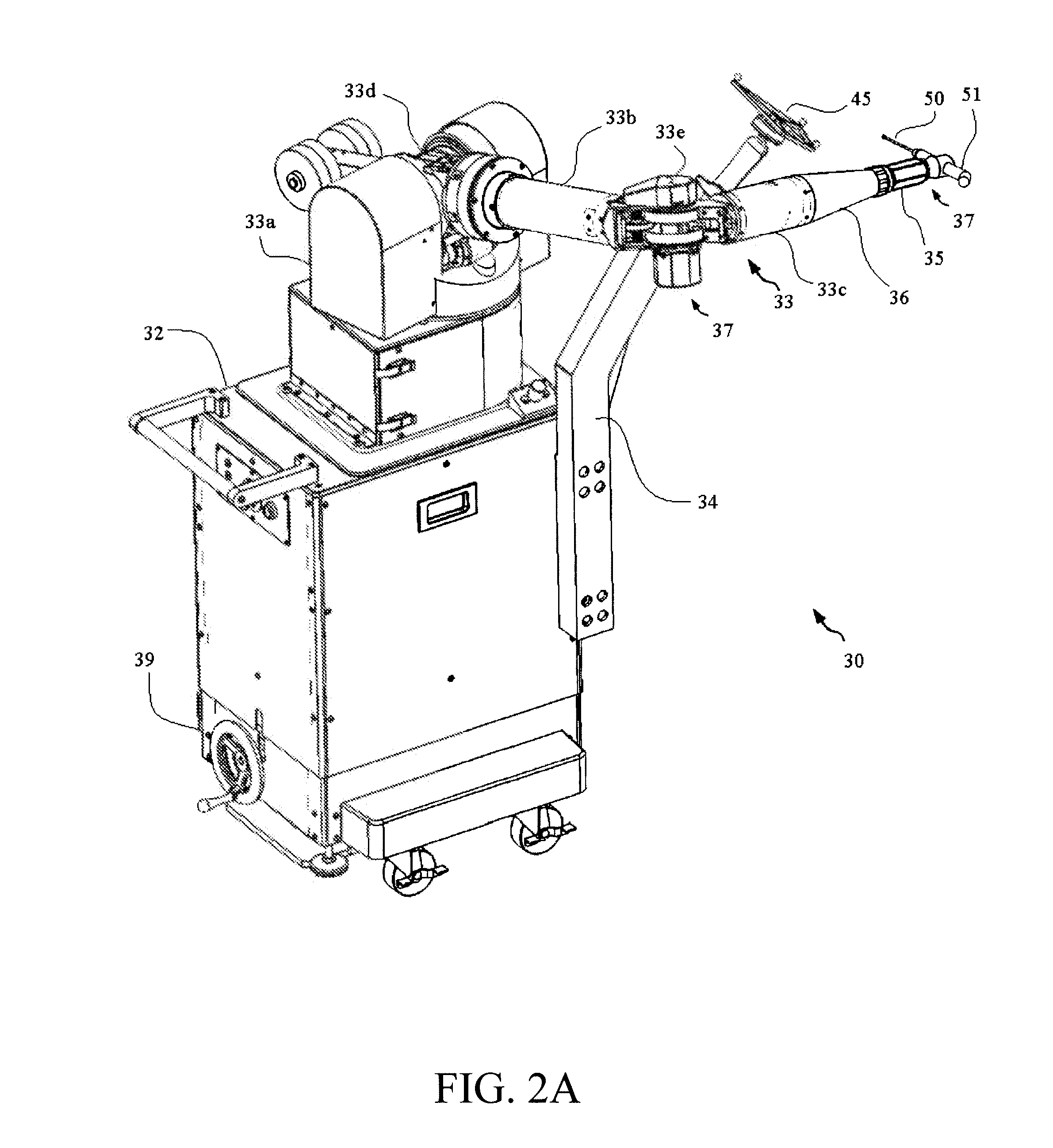Method and apparatus for controlling a haptic device
a haptic device and control method technology, applied in the field of surgical systems, can solve the problems of increasing the complexity of sculpting bone and assessing the proper implant position, reducing the surgeon's ability, and reducing the accuracy of implant placement,
- Summary
- Abstract
- Description
- Claims
- Application Information
AI Technical Summary
Benefits of technology
Problems solved by technology
Method used
Image
Examples
Embodiment Construction
[0033]Presently preferred embodiments of the invention are illustrated in the drawings. An effort has been made to use the same or like reference numbers to refer to the same or like parts.
[0034]FIG. 1 shows an embodiment of a surgical system 10. The surgical system 10 includes a computing system 20, a haptic device 30, and a tracking system 40. In one embodiment, the surgical system 10 is a robotic surgical system as disclosed in U.S. patent application Ser. No. 11 / 357,197, Pub. No. US 2006 / 0142657, filed Feb. 21, 2006, and incorporated by reference herein in its entirety. In a preferred embodiment, the surgical system 10 is the HAPTIC GUIDANCE SYSTEM™ available from MAKO SURGICAL CORP.® in Ft. Lauderdale, Fla.
[0035]The computing system 20 includes hardware and software for operation and control of the surgical system 10 and may comprise a computer 21, a computer 31, a display device 23, an input device 25, and a cart 29. The computing system 20 is adapted to enable the surgical sy...
PUM
 Login to View More
Login to View More Abstract
Description
Claims
Application Information
 Login to View More
Login to View More - R&D
- Intellectual Property
- Life Sciences
- Materials
- Tech Scout
- Unparalleled Data Quality
- Higher Quality Content
- 60% Fewer Hallucinations
Browse by: Latest US Patents, China's latest patents, Technical Efficacy Thesaurus, Application Domain, Technology Topic, Popular Technical Reports.
© 2025 PatSnap. All rights reserved.Legal|Privacy policy|Modern Slavery Act Transparency Statement|Sitemap|About US| Contact US: help@patsnap.com



